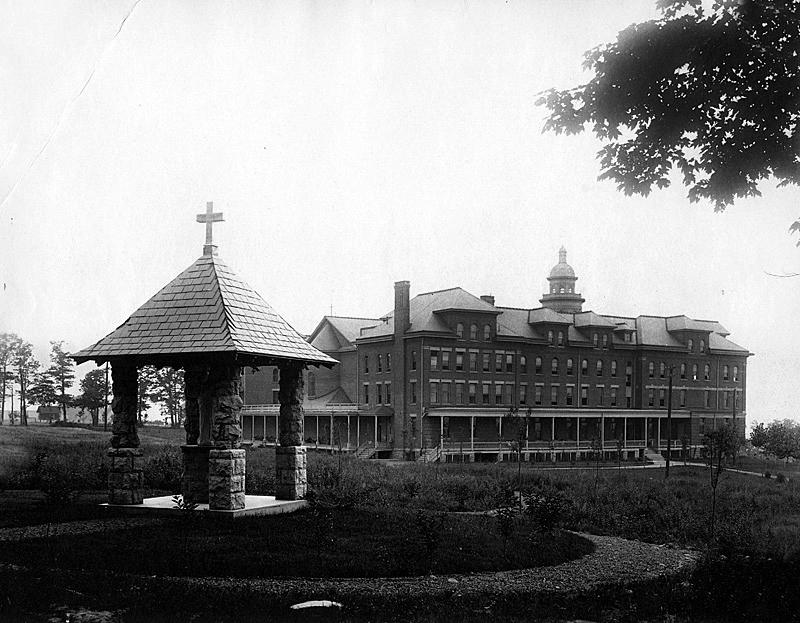
Remembering the Motherhouse
Dramatic photographs of wind-whipped flames swallowing up the huge 68-year-old motherhouse buildings tell the story better than any words can portray. Headlines of national and local newspapers shouted various aspects of the tragedy: "Marywood's Motherhouse Destroyed by flames"; "Nine Nuns Injured in Marywood Fire"; "About 140 Removed By Police, Firemen in General Alarmer"; "Pope Paul's Sorrow Passed to Marywood." These, and many, many more columns announced the news of the devastating fire at the Marywood Motherhouse in the early morning hours of February 22, 1971.
In addition to housing sisters on the faculty at Marywood College located on the same campus, the huge motherhouse building was the site of Marywood Seminary, an outstanding high school for girls. This building also housed the junior professed Sisters of IHM who were pursuing their higher education and spiritual formation program.
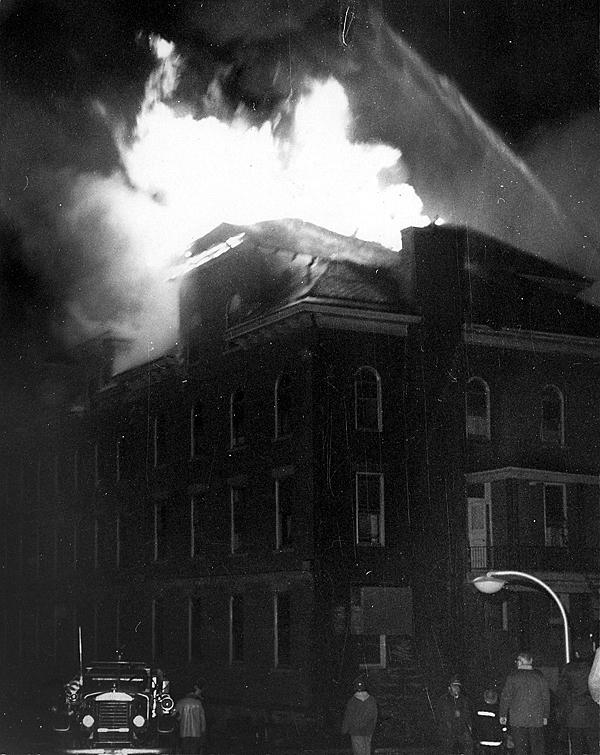
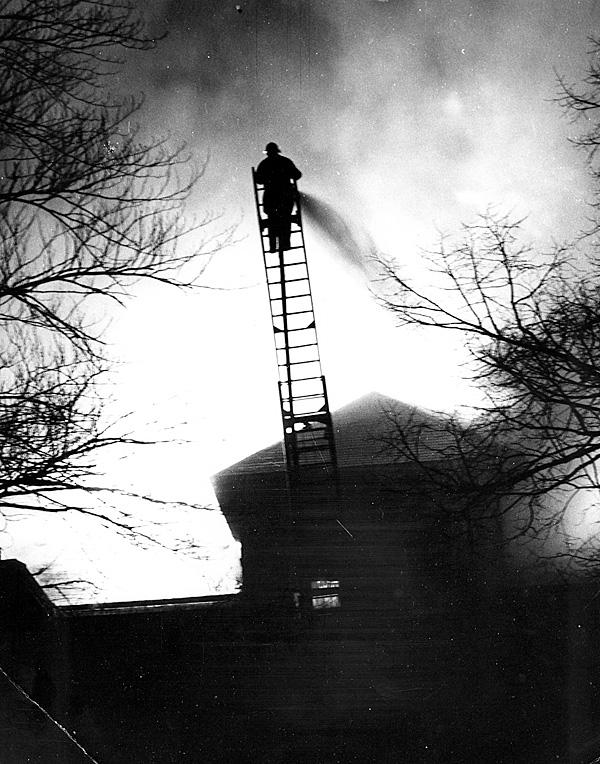

While no one died in the fire, it was this latter group, housed on the fourth floor of the seminary wing, who suffered the greatest trauma and injury. Forced to jump from the fourth floor to a roof below, after being trapped by flames, two junior professed sisters were listed in critical condition. Sister Lisa Barnes suffered a broken leg and Sister Sharon Kelly first-degree burns of the legs and back. Multiple burns and smoke inhalation caused the hospitalization of Sisters Rosemary Ludwick and Mary Violet Sloat. Five others were also taken to the hospital for treatment: Sisters Jean Coughlin, Sheila Cashera, Bernadette Thomas, Immaculate Severino, Maureen Schrimpe, and Camille Lacosto. At least five firemen also suffered in fighting the blaze, receiving a range of injuries from facial and body burns to broken and sprained backs from falls out the windows and smoke inhalation. (419)
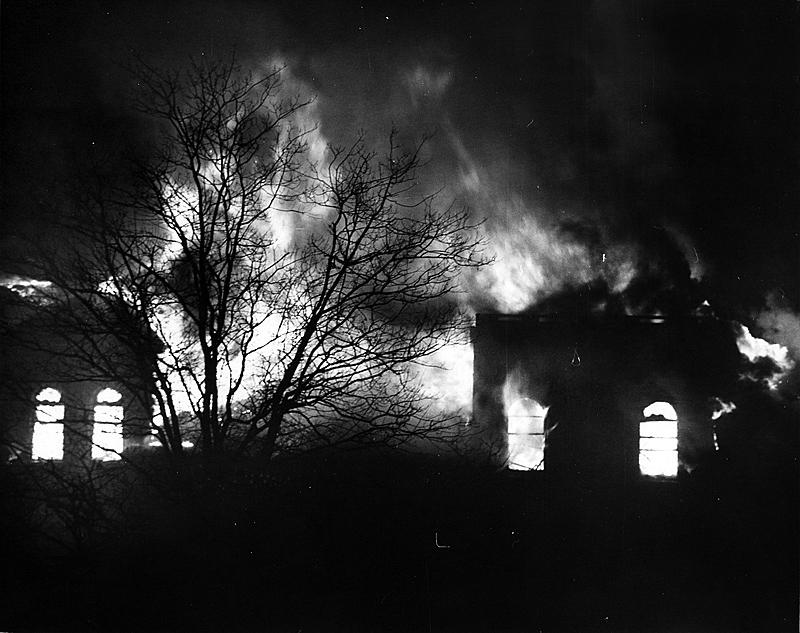
With the destruction of the west wing of the Motherhouse, some 120 sisters, chiefly faculty of Marywood College and Seminary, were in need of immediate housing. Mother Beata arranged for many of them to stay in the newly completed wing of the Marian Convent, and others to live at the novitiate building. Eventually, dormitories in the novitiate would be converted into private rooms for the permanent housing of these sisters.
Housing was, of course, a major item, but myriads of minor losses were immediately obvious as sisters had lost clothing, eyeglasses, and other personal effects, in addition to books, research materials, and other academic work. Addressing some of these personal needs, donations from every diocese where our sisters were located poured in, ranging from $5 to $9,000 gifts. The Marywood College faculty donated $9,000 to the sisters; the Globe Store in Scranton donated $5,000 in gift certificates to be used by the sisters for new clothing. Mother Claudia, superior general of the Philadelphia IHMs, sent $5,000, as did the Daughters of Charity of Emittsburg, Maryland. Among the donors were organizations and people of every faith. Alumnae of the college and seminary, Knights of Columbus, members of Temple Israel in Scranton, the faculty and administration of the University of Scranton, and many more. Sisters from nearby and far distant missions, IHMs and other religious congregations, provided funds, clothing, and prayerful moral support.
References:
419. The Scranton Times, February 23, 1971
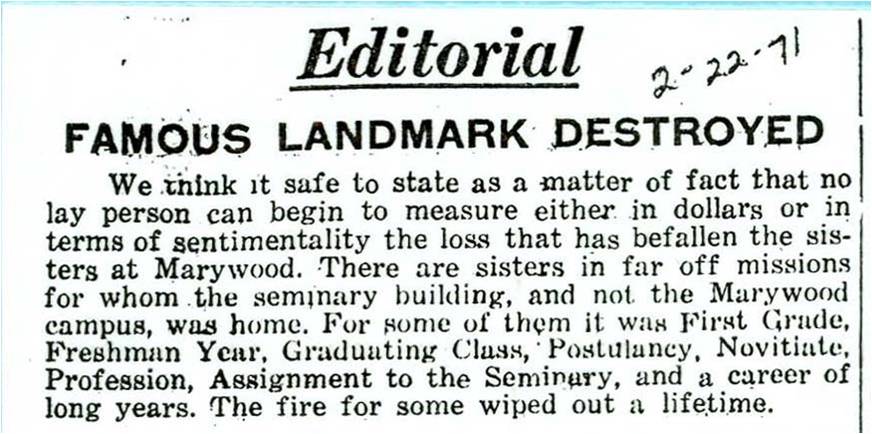 We think it safe to state as a matter of fact that no lay person can begin to measure either in dollars or in terms of sentimentality the loss that has befallen the sisters at Marywood. There are sisters in far off missions for whom the seminary building, and not the Marywood campus, was home. For some of them it was First Grade, Freshman Year, Graduating Class, Postulancy, Novitiate, Profession, Assignment to the Seminary, and a career of long years. The fire for some wiped out a lifetime.
We think it safe to state as a matter of fact that no lay person can begin to measure either in dollars or in terms of sentimentality the loss that has befallen the sisters at Marywood. There are sisters in far off missions for whom the seminary building, and not the Marywood campus, was home. For some of them it was First Grade, Freshman Year, Graduating Class, Postulancy, Novitiate, Profession, Assignment to the Seminary, and a career of long years. The fire for some wiped out a lifetime.